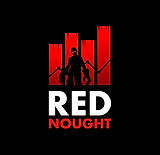Building Universes from Code: When Worlds Misalign
- Tim Ellis
- Nov 10
- 2 min read

In the vastness of our universe, even the smallest variations can have profound effects.
A fraction of a degree in a planet’s orbit.
A subtle shift in a star’s gravity.
Change one variable, and an entirely new solar system unfolds.
The same is true in the digital universes we build.
When creating complex virtual environments, we’ve learned that harmony between disciplines - art, design, and computation - is essential. And yet, it’s remarkably easy for those worlds to fall slightly out of sync.
Imagine this: one developer builds the characters, while another defines the mapping of the world. Both do their jobs perfectly, but the physics of intent and the physics of design drift ever so slightly apart.
A character built to stride confidently meets a world of narrower paths.
A surface meant to feel solid becomes unexpectedly treacherous.
An elegant animation collides with invisible geometry.
Each system works beautifully in isolation - but together, they begin speaking different dialects of reality.
And that’s where true creation begins: in the space between.
At Baldr Engine, this challenge is at the heart of what we do. We’ve built our technology around the idea of harmony - ensuring that every object, every element, every system understands just enough about the others to move together seamlessly.
It’s where the art of one object meets the mathematics of another.
Where design intent and computational logic align to create something that feels alive.
Because building worlds isn’t just about code or assets or physics.
It’s about finding the perfect balance - that quiet moment when everything clicks into place and a simulation becomes a living, breathing world.
That’s the magic of Baldr Engine.
Tim Ellis
10th November 2025
Explore Baldr Engine and be part of the journey through our public beta www.rednought.com/beta









Comments